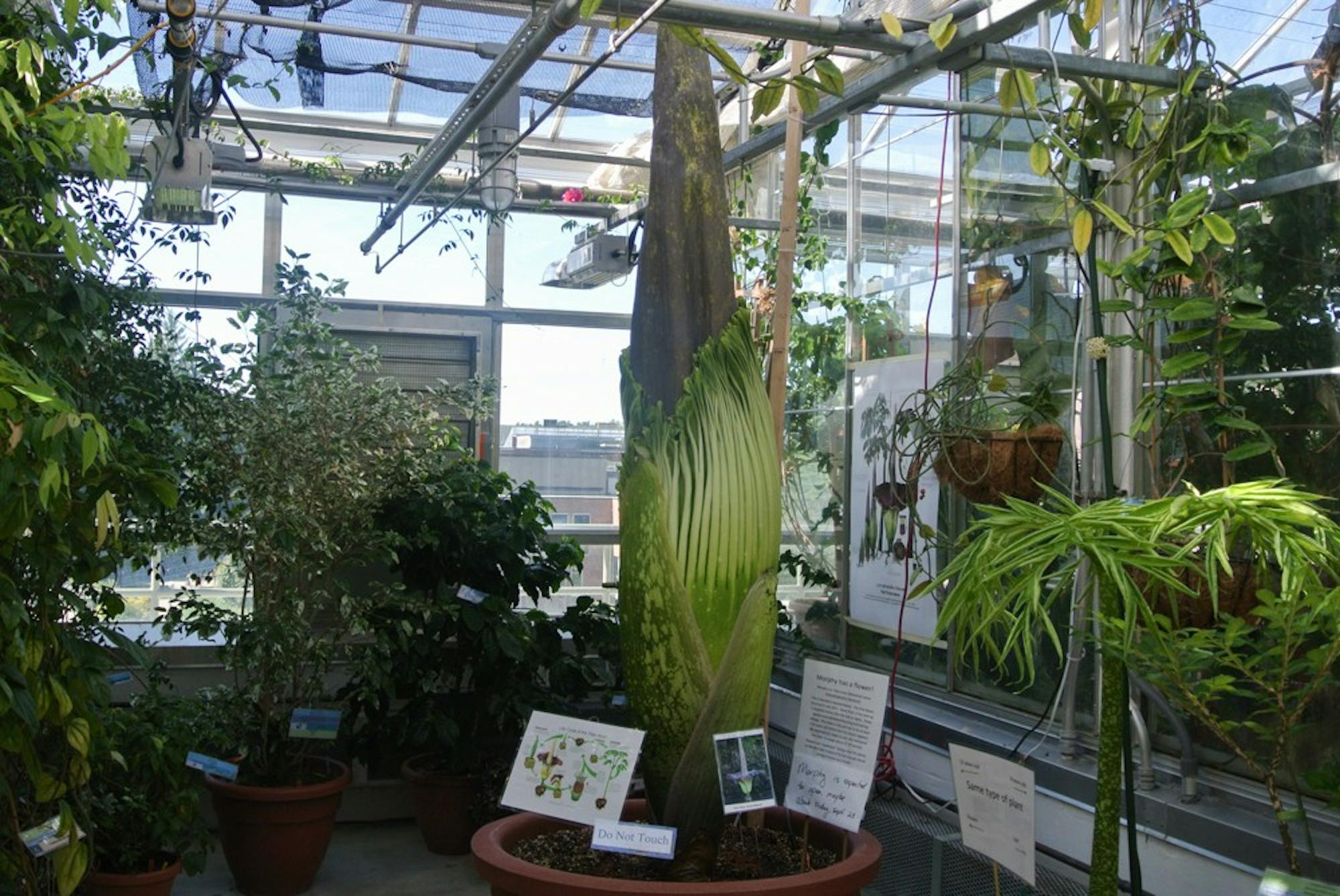The College’s resident “corpse flower,” known as Morphy, is expected to bloom at the end of this week for the first time since July 2011. Housed in the greenhouse atop the Class of 1978 Life Sciences Center, the 13-year-old specimen of Amorphophallus titanum has only bloomed one other time throughout its life. The flower will bloom for two to three days.
The flower takes its name from the putrid smell it emits when in bloom that is similar to rotting flesh. The smell will be at its strongest for the first 12 hours, although it will still linger for the duration of the bloom. Greenhouse manager Kim DeLong said that the bloom will most likely occur after visiting hours, noting that the flower will first begin to open in the late afternoon, continuing the process over the course of the night.
Morphy was first acquired by the College nine years ago from a private grower based in New Hampshire. The flower, which DeLong refers to as a he, first bloomed four years later. Since then, Morphy has grown a leaf on two separate occasions. The leaf, which lasts for a year, then photosynthesizes and stores energy in the plant’s tuber, with the tuber eventually sending up a flower every five or six years.
“At some point in the last couple of months he decided he had enough energy,” DeLong said.
As the bloom starts, the two green petals on the side of the tuber will turn brown and part. This allows visitors to view the inside of the flower, which will be a dark burgundy color, akin to the hue of meat.
The bloom will serve not only as a unique visual and olfactory experience, but also a scientific one. The greenhouse will hand-pollinate the plant at some point over the two or three days when it is in bloom, using pollen sent by Rollins College in Winter Park, Florida, in the hope of producing seeds. While the flower currently stands at eight feet and weighs around 40 pounds, both figures are expected to rise before it finally blooms.
Despite Morphy’s weight and height, DeLong said that caring for the flower has been relatively low-maintenance. Because the flower’s natural habitat is in the understory of the rainforest, Morphy needs little light, high humidity, and warm temperatures.
DeLong has been working with Amy Olson, senior media relations officer, to publicize the upcoming bloom. Olson and DeLong have been collaborating to figure out how to best handle crowds and visitors.
The number of visitors has begun to increase as Friday, the estimated day of the bloom, approaches. On Sunday, the greenhouse welcomed around 170 guests, with that number growing to around 250 on both Monday and Tuesday. People will be able to keep track of Morphy remotely via a livestream on the greenhouse’s website.
After having watched Morphy on the livestream and reading multiple emails regarding Morphy’s upcoming bloom, Leslie Kelton, an education support technologist at the College, made a visit to the greenhouse on Wednesday. After the flower blooms she will revisit the greenhouse with her father.
With the news of Morphy’s upcoming bloom, more people will learn about what DeLong described as an “alien plant” so special.
“Morphy’s just awesome,” DeLong said. “He’s one of nature’s wonders and something you’re not going to see just walking out in the woods.”
Anthony is a '20 from Dallas, TX. Anthony plans to major in Film & Media Studies at Dartmouth, and decided to join The D to further his passion for writing. In addition to working with The D, Anthony considers himself a passionate supporter of the Dallas Cowboys and spends his days watching movies, admiring fine art, and using the Oxford comma.




